You bought your electric RTR (ready to run) short course truck because you just wanted to play in dirt lots and go fast. But you didn’t count on the racing bug biting you so soon. Do you need to give up on the RTR to buy another vehicle to race? No, sir! Although they may not all pertain to your specific vehicle, the following upgrades and easy to perform modifications can take your entry level RTR from fun on the backyard to competition on the racetrack.
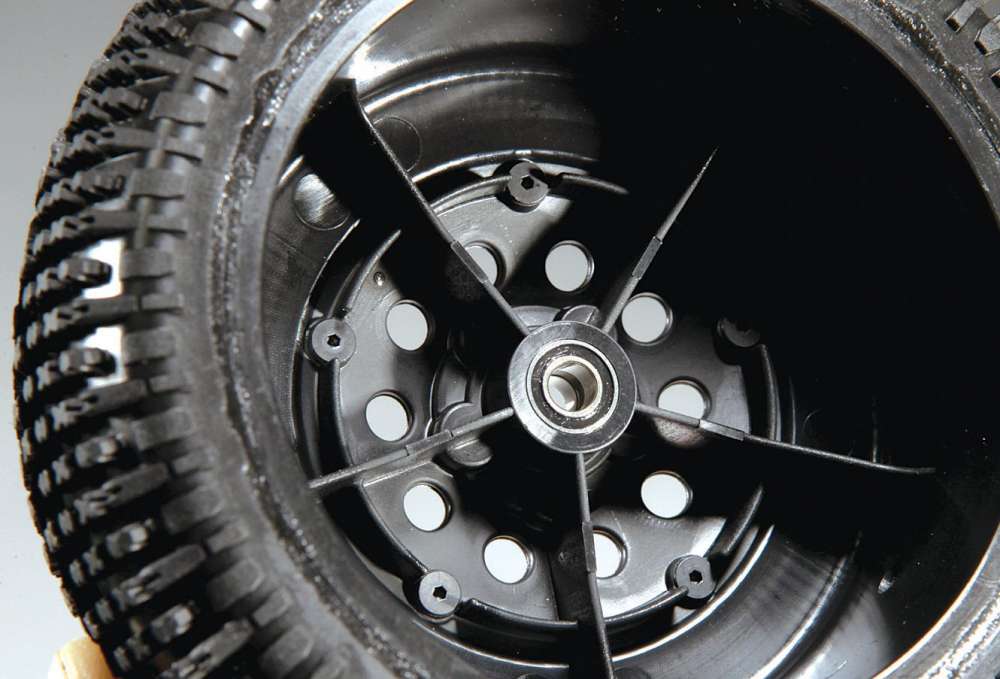 1 BEARINGS
1 BEARINGS
Your car may have come with bushings or even standard metal shield bearings instead of a quality set of sealed ball bearings to keep the wheels and axles spinning smoothly. If that is the case, simply swapping the bushings out for a set of good ball bearings will be a huge improvement. Whether you have bearings already or are about to add them, there is an easy way to squeeze a little more spin out of them in four simple steps.
A. Very carefully remove one of the seals with a sharp hobby knife.
B. Use motor spray to blast the bearings clean.
C. Apply a couple of drops of bearing oil, to the balls inside the bearing.
D. Re-install the seal.
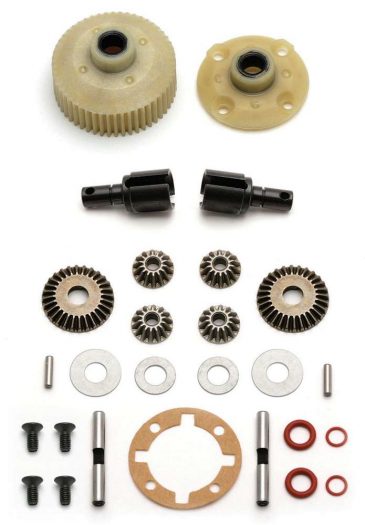 2 DIFFERENTIALS
2 DIFFERENTIALS
Electric RTR short course trucks generally use gear differentials. Factory grease may be a bit sparse, so give your diffs a treatment similar to the bearings. You will want to clean out the stock grease completely and replace it with a better quality grease. To do this, you need to gather up your patience and disassemble the diff. Do this over a towel to keep parts from vanishing into thin air. Clean all the parts with a good motor spray or denatured alcohol and liberally regrease the internals as you reassemble the diff.
Pro-Tip: Get a ball diff. Most manufacturers offer a ball differential option for their vehicles. Ball differentials are the preffered diff for 1/10 racers because of their smooth action and consistency.
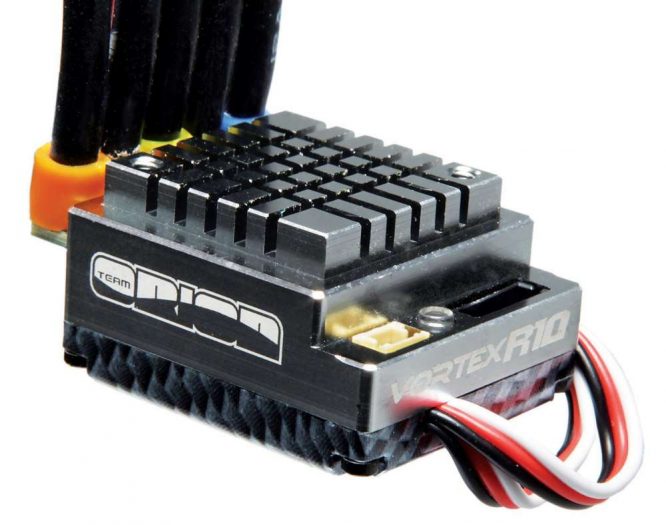 3 ELECTRONIC SPEED CONTROL
3 ELECTRONIC SPEED CONTROL
Most RTR cars include a sport style ESC that is suited for the included motors; however, the ESC may not last if you upgrade to a hotter motor (which is coming up as the next suggestion). You can benefit from upgrading the ESC to one that handles power much more efficiently and can be used for a wider variety of motors. A new ESC can be used with your current motor until you can upgrade that as well. Tekin, LRP, Hobbywing and others produce ESCs that range from budget to intermediate priced units up to units for the serious racer. Expect to pay between $75 and $150 for a decent unit. Keep in mind that reverse cannot be used during a race, so many of the ESCs that feature a reverse function have a program profile that eliminates it for racing. Do yourself a favor and do a little research before you choose an ESC. Make sure that you understand the ESC’s limitations and that you choose a motor that fits within the outlined specifications.
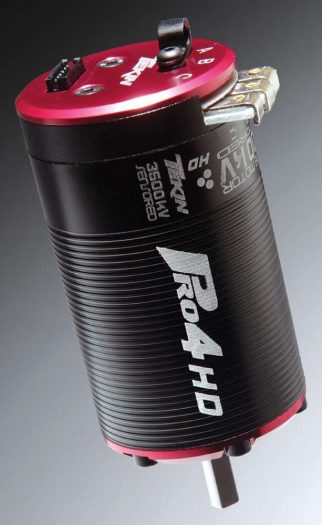 4 MOTOR
4 MOTOR
Choosing a new motor can make you dizzy because there are so many choices available. The easiest way to find a suitable upgrade is to talk to the other drivers at the facility where you plan to race. Find out what they are using and ask for suggestions. Most experienced racers should be more than happy to help you. The class in which you plan to race will also dictate the type of motor you should consider. A good 17.5-turn brushless motor will get you into the stock class; and a 13.5-turn motor is good if you want to take it up a notch and your track offers this spec class, but you are not quite ready for modified. If you want to jump right into modified, try to stick with a mild modified like a 10.5, keeping in mind the type of speed control you have purchased or will need to purchase.
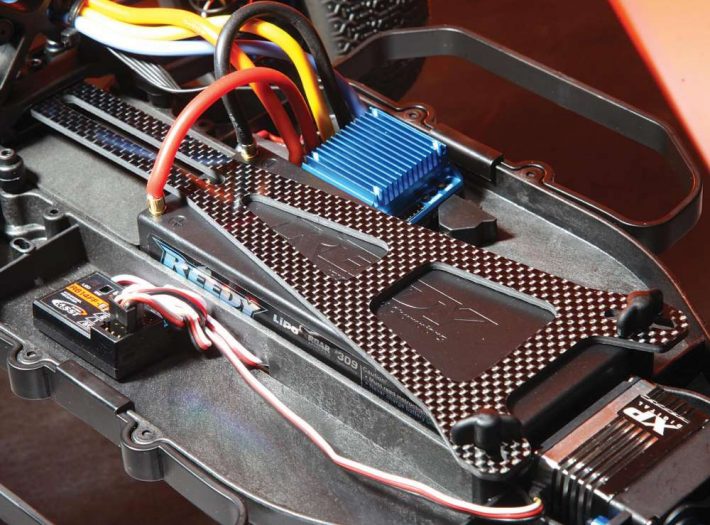 5 CONNECTORS
5 CONNECTORS
Standard battery connectors are not the most efficient and can rob your car of power when you upgrade to better batteries and/or electronics. High power T-Plugs or bullet plugs are the most commonly used among serious racers. The following supplies are needed.
•T-Style Connectors: Two male connectors, one for the speed control and one to make a charging adapter, and a female connector for each battery pack you plan to use
•Shrink tubing to protect the solder joints
•A quality soldering iron: Trying to solder Deans’ connectors to your speed control with a cheap soldering gun can potentially overheat the circuit board and cause damage. Creating a clean solder joint is critical to getting the most efficiency from these connectors.
•Patience: Don’t rush the soldering process. If you are not comfortable with a soldering iron, seek the help of someone with experience.
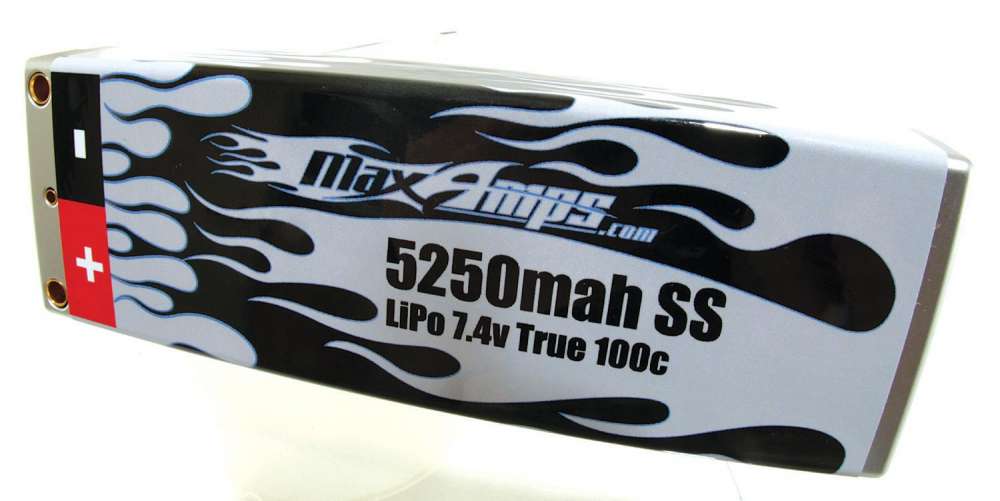 6 BATTERIES
6 BATTERIES
A sport battery pack may have a much more attractive price tag, but it can also mean the difference between a good and bad day of racing. Invest in at least three or four good battery packs. Check what the locals are running, but I might suggest 3800mAh or higher. These higher mAh batteries will pack more punch and provide more consistent run times. Expect to pay $50 or more per pack. Consider splurging a bit on at least one very well matched pack to run in the Mains and use the other packs for your qualifiers.
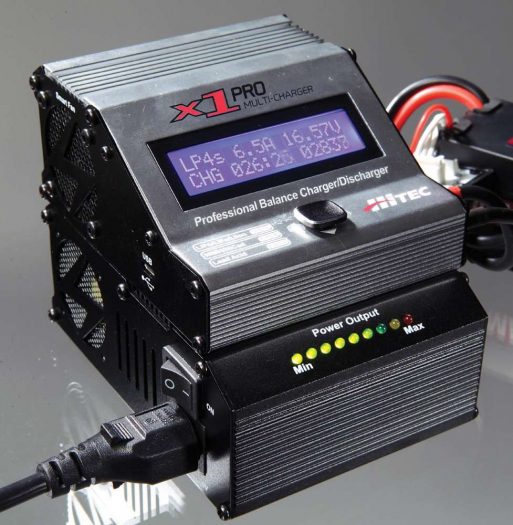 7 CHARGER
7 CHARGER
Having decent battery packs will do you no good without a charger capable of charging and discharging them consistently. LRP, Hitec, Dynamite and DuraTrax all have suitable units that feature a charge rate of around five to ten amps to help pull a bit more punch from your packs. A discharge function is a necessity if you want to properly manage your battery packs. Most decent chargers will feature a discharge rate of up to ten amps, which is ideal for your purposes at this point.
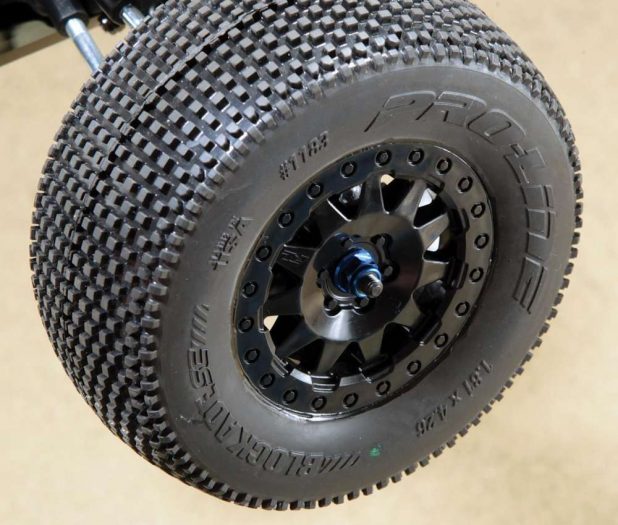 8 TIRES
8 TIRES
You will most likely be racing on either dirt or clay. Mini pin or bar style and even slicks are usually the tires of choice for these surfaces. They are available in different compounds from soft to firm. Having an assortment from which to choose is a good idea if you want to get the best handling out of your car. You will also want to keep a bottle of traction compound in your pit box if your track allows it. It’s a liquid that is brushed onto the tires to soften them for better traction.
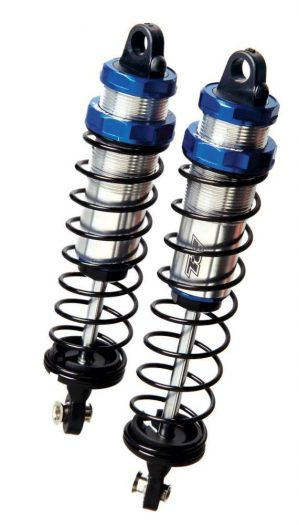 9 SHOCKS
9 SHOCKS
Oil shocks are a must-have for racing. Hobbyists who are new to RC racing are usually surprised at just how much difference suspension tuning can make in the way a car handles different tracks. For that reason, you should consider purchasing several spring sets of different compression rates and additional bottles of shock oil of different viscosities. A truck that drives well on a wide, open track may not handle as well on a tighter course. A track’s surface also plays a role in which spring rates and oil weights work best.
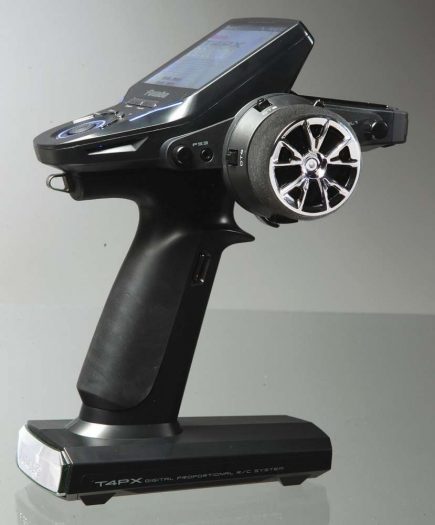 10 RADIO SYSTEM
10 RADIO SYSTEM
A majority of RTR vehicles include a fairly basic radio system that works just fine in the back yard; however, if you’re going to be racing, you will need a radio that will give you a few more useful features to fine tune your driving style. Features that could come in handy include EPA (end point adjustment) and Exponential and Dual Rate Steering. The EPA adjusts the point at which the servo’s throw stops. For electric cars, the EPA is primarily used on the steering servo to tune steering for different track conditions. Exponential can be a bit intimidating but very useful. Expo can be set so that the servo reacts slower during initial control input and then increases in speed as it reaches its maximum throw, or vice versa. Dual Rate Steering determines the maximum travel of the servo from control input. This can be helpful for new RC drivers as it prevents over-steering. Also, racers find it useful in tuning their car’s steering for specific tracks. You may not use these features right away, but it won’t be long before you learn just how beneficial they can be.
CONCLUSION
When you are ready to move into race mode, please check with your local hobby shop for the things you will need. They may even have a few suggestions that will help you out. Just remember that this hobby is all about fun. Don’t let the competitive nature of racing take over and ruin this great hobby for you or those around you.
By David Baker
LINKS
Duratrax, distributed exclusively by Great Planes Model Distributors, www.duratrax.com, (800) 682-8948
Dynamite, distributed by Horizon Hobby, dynamiterc.com, horizonhobby.com (800) 338-4639
Hitec, hitecrcd.com, (858) 748-6948
Hobbywing Technology Co., Ltd., hobbywing.com
LRP, distributed by Team Associated, www.teamassociated.com, (714) 850-9342
Team Orion Inc., www.teamorion.com, (714) 694-2812
Tekin, Inc., teamtekin.com, (208) 634-5559
 RC Driver The Best In RC Car & Truck News, Reviews & Video
RC Driver The Best In RC Car & Truck News, Reviews & Video 


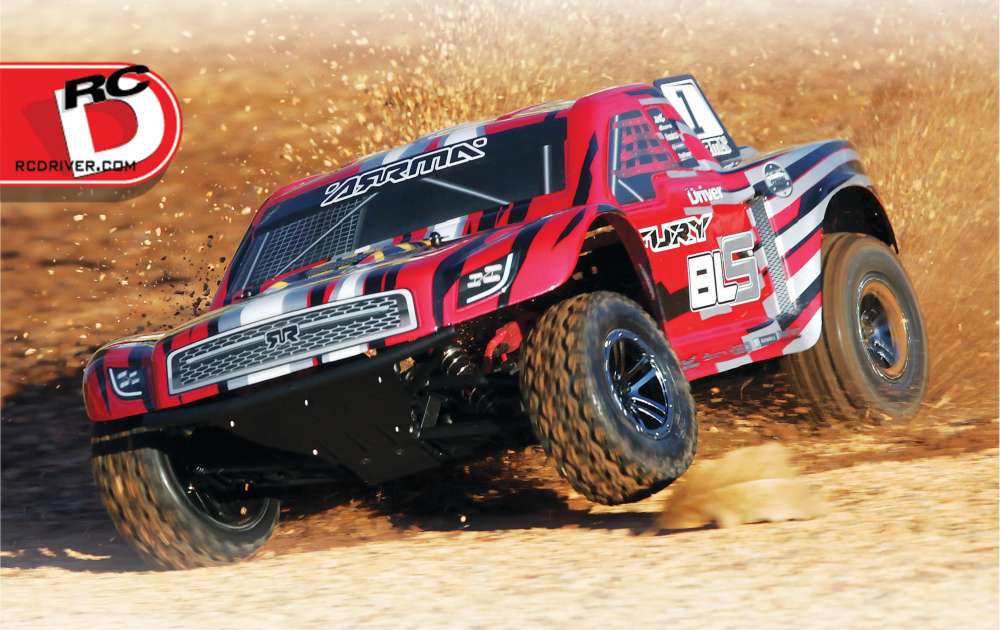






I didn’t realize how much work actually went into one of these cars. Thanks for the tips!